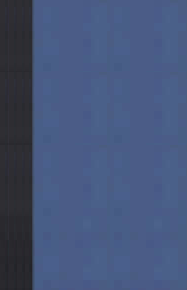Chaucer -- General
-
The Oxford Handbook of Chaucer by
Publication Date: 2020Explains the surprisingly interconnected world of the fourteenth century and offers a new perspective that uses the works of Chaucer to look out upon the wider world. -
The Cambridge Introduction to Chaucer by
Call Number: PR1924 .M466 2014, Third LevelPublication Date: 2014An ideal starting point for study of all Chaucer's major poems. Offers close readings of individual texts, presenting various possibilities for interpretation. -
Geoffrey Chaucer by
Call Number: PR1924 .B88 2011, Third LevelPublication Date: 2011Offers a wide-ranging account of the medieval society from which works such as The Canterbury Tales and Troilus and Criseyde sprang. -
Congenial Souls by
Publication Date: 2001Examines Chaucer's works as a bridge between the medieval and modern worlds. -
An Introduction to Geoffrey Chaucer by
Publication Date: 2013This introduction begins with a review of Chaucer's life and the cultural milieu of fourteenth-century England and then expands into analyses of his major works . -
Chaucerian Theatricality by
Publication Date: 2014Ganim uses the concept of theatricality to illuminate Chaucer's manipulations of the forms of popular culture and high literary discourse. -
Reading Chaucer in Time: Literary Formation in England and Italy by
Publication Date: 2020Tracks how concepts of reading developed within Italian texts, including Dante's Vita nova, Boccaccio's Filostrato and Teseida, and Petrarch's Seniles, impress themselves upon Chaucer's Troilus and Criseyde and Canterbury Tales. Argues that Chaucer's poetry reveals the implications of reading for formation: above all, that it both depends upon and effaces the historical perspective and temporal experience of the individual reader.
Canterbury Tales
-
 The Cambridge Companion to the Canterbury Tales
by
Publication Date: 2020A lively introduction to the poem's diversity, depth, and wonder.
The Cambridge Companion to the Canterbury Tales
by
Publication Date: 2020A lively introduction to the poem's diversity, depth, and wonder. -
Literary Value and Social Identity in the Canterbury Tales by
Publication Date: 2021Examines the multiform, dynamic meditation on the relation between literary value and social identity that Chaucer stitched into the heart of The Canterbury Tales. -
Gender and Romance in Chaucer's Canterbury Tales by
Publication Date: 1994For Chaucer, Crane proposes, gender is the defining concern of romance. Crane draws on feminist and genre theory to argue that Chaucer's profound interest in the cultural construction of masculinity and femininity arises in large part from his experience of romance. In depicting the maturation of young women and men, romances stage an ideology of identity that is based in gender difference.
Chaucer & Religion
-
Chaucer and Religion by
Publication Date: 2010Provides an orientation on the study of religions, religious traditions, and religious controversies of Chaucer's era. -
 Chaucer's Church
by
Call Number: PR1941 .F67 2002, Third LevelPublication Date: 2002Provides clear and reliable explanations of every term Chaucer uses that has a religious, liturgical, or ecclesiastical meaning.
Chaucer's Church
by
Call Number: PR1941 .F67 2002, Third LevelPublication Date: 2002Provides clear and reliable explanations of every term Chaucer uses that has a religious, liturgical, or ecclesiastical meaning.
Chaucer & Philosophy
-
Practicing Literary Theory in the Middle Ages by
Call Number: PR275.E77 J64 2013, Third LevelPublication Date: 2013Reveals that aesthetics are inextricable from ethics in the writing of medieval literature. Demonstrates the underlying prosimetric structures in Chaucer's Troilus and Criseyde and portions of the Canterbury Tales. -
Philosophical Chaucer by
Call Number: PR1875.P5 M55 2004, Third LevelPublication Date: 2005Examines the links between sexuality and agency in the Canterbury Tales. Chaucer's philosophical sophistication provides the basis for a new interpretation of the emerging notions of sexual desire and romantic love in the Middle Ages.
Chaucer & Modernity
-
Chaucer and Boccaccio by
Call Number: PR1912.B6 E39 2002, Third LevelPublication Date: 2002Provides a novel way of assessing Chaucer's analysis of late medieval culture.

